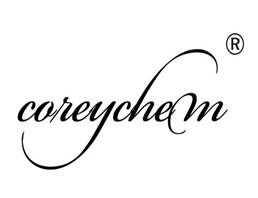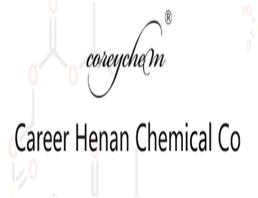
Warfarin
| Price | $1 |
| Package | 1KG |
| Min. Order: | 1G |
| Supply Ability: | 100KG |
| Update Time: | 2019-07-06 |
Product Details
| Product Name: Warfarin | CAS No.: 81-81-2 |
| Min. Order: 1G | Purity: 98% |
| Supply Ability: 100KG | Release date: 2019/07/06 |
AD68
| Warfarin Basic information |
| Application in Ischemic Stroke Application in Ischemic Stroke Description References |
| Product Name: | Warfarin |
| Synonyms: | SAKARAT;PROLIN(R);WARF COMPOUND 42(R);WARF(R);Warfarat;WARFARIN;ZOOCOUMARIN;4-HYDROXY-3-(3-OXO-1-PHENYLBUTYL)COUMARIN |
| CAS: | 81-81-2 |
| MF: | C19H16O4 |
| MW: | 308.33 |
| EINECS: | 201-377-6 |
| Product Categories: | Coumarins;INSECTICIDE;Intermediates & Fine Chemicals;Pharmaceuticals;Miscellaneous Compounds;Aromatics;Heterocycles;API;Cardiovascular APIs;Pharma |
| Mol File: | 81-81-2.mol |
 |
|
| Warfarin Chemical Properties |
| Melting point | 162-164 °C(lit.) |
| Boiling point | 356°C |
| density | 1.1411 (rough estimate) |
| refractive index | 1.4434 (estimate) |
| Fp | 2℃ |
| storage temp. | 2-8°C |
| form | Crystalline |
| color | Colorless |
| Water Solubility | Practically insoluble |
| Merck | 13,10097 |
| CAS DataBase Reference | 81-81-2(CAS DataBase Reference) |
| NIST Chemistry Reference | 3-(Alpha-acetonylbenzyl)-4-hydroxycoumarin(81-81-2) |
| EPA Substance Registry System | 2H-1-Benzopyran- 2-one, 4-hydroxy-3-(3-oxo-1-phenylbutyl)- (81-81-2) |
| Safety Information |
| Hazard Codes | T,T+,Xn,F |
| Risk Statements | 61-48/25-52/53-28-21-36-20/21/22-11 |
| Safety Statements | 53-45-61-52-36/37-28-26-16 |
| RIDADR | UN 2811 6.1/PG 1 |
| WGK Germany | 3 |
| RTECS | GN4550000 |
| HazardClass | 6.1(a) |
| PackingGroup | I |
| Hazardous Substances Data | 81-81-2(Hazardous Substances Data) |
| Warfarin Usage And Synthesis |
| Application in Ischemic Stroke | aaa3 |
| Application in Ischemic Stroke | Warfarin is the antithrombotic agent of first choice for secondary prevention in patients with atrial fibrillation and a presumed cardiac source of embolism. |
| Description | Warfarin is tasteless and colorless. It is a widely used as anticoagulant (which stops the blood clotting) in the treatment and prevention of thrombosis, in the treatment for chronic atrial fibrillation, mechanical valves, pulmonary embolism, and dilated cardiomyopathy. Warfarin is metabolized primarily via oxidation in the liver by CYP2C9, and exerts its anticoagulant effect by inhibiting the protein vitamin K epoxide reductase complex, subunit 1 (VKORC1). Warfarin therapy can be associated with significant bleeding complications. Achieving a safe therapeutic response can be difficult because of warfarin’s narrow therapeutic index and great individual variability in the dose required, which is mostly a consequence of individual genetic variants: it is influenced by ageing, co-prescribed drugs, diet, alcohol consumption, and comorbid conditions. To maintain a therapeutic level of anti-thrombosis and to minimize the risk of bleeding complications, warfarin therapy requires intensive monitoring via the INR to guide its dosing. It is also used as the first generation of anticoagulant rodenticides. |
| References | [1] Simon Sanderson, Jon Emery, Julian Higgins (2005) CYP2C9 gene variants, drug dose, and bleeding risk in warfarin-treated patients: A HuGEnetTM systematic review and meta-analysis, 7, 97-104 [2] http://npic.orst.edu/factsheets/rodenticides.html [3] http://emedicine.medscape.com/article/1733331-overview |
| Application in Ischemic Stroke | Warfarin is the antithrombotic agent of first choice for secondary prevention in patients with atrial fibrillation and a presumed cardiac source of embolism. |
| Application in Ischemic Stroke | Warfarin is the antithrombotic agent of first choice for secondary prevention in patients with atrial fibrillation and a presumed cardiac source of embolism. |
| Application in Ischemic Stroke | Warfarin is the antithrombotic agent of first choice for secondary prevention in patients with atrial fibrillation and a presumed cardiac source of embolism. |
| Application | Warfarin is an anti-coagulant used to prevent heart attacks, strokes, and the formation of blood clots. It interferes with the use of vitamin K in the required carboxylation of several vitamin K-dependent proteins in the clotting cascade, preventing the initiating of clotting. (±)-Warfarin is a racemic mixture of 2 optically active isomers. (±)-Warfarin has a half-life of 36-42 hours in circulation, bound to plasma proteins, and accumulates in the liver, where the two isomers are metabolized by different pathways. |
| General Description | Odorless and colorless solid. Used as a rodenticide for Norway rats and for house mice. |
| Reactivity Profile | Warfarin is incompatible with the following: Strong oxidizers . |
| Health Hazard | Warfarin is classified as very toxic. Probable oral lethal dose in humans is 50-500 mg/kg, between 1 teaspoon and 1 ounce for a 150 lb. person. Material is an anticoagulant. Toxic effects other than hemorrhage are rarely seen in humans. Material is believed to be teratogenic in humans. Persons with a history of blood disorders with bleeding tendencies would be expected to be at increased risk from exposure. |
| Fire Hazard | Contact with strong oxidizers may cause fires and explosions. Toxic gases and vapors (e.g., carbon monoxide) may be released in heating to decomposition. Avoid strong oxidizers. |
| Agricultural Uses | Rodenticide: Warfarin and its sodium salt is an anticoagulant rodenticide used for controlling rats and house mice in and around homes, animal and agricultural premises, and commercialand industrial sites. It is effective in very low dosages. About a week is required before a marked reduction in the rodent population is noticeable. Rodents do not become bait-shy after once tasting warfarin; they continue to consume it until its anti-clotting properties have produced death through internal hemorrhaging. It can be used year-after-year wherever a rodent problem exists. Warfarin and its sodium salt are only slightly dangerous to humans and domestic animals when used as directed, but care must be taken with young pigs, which are especially susceptible. The sodium salt is also used to treat people with blood hypercoagulation problems. Registered for use in EU countries . Registered for use in the U.S. |
Company Profile Introduction
Established in 2014,Career Henan Chemical Co. is a manufacturerspecializing in the sale of fine chemicals.
Mainly deals in the sales of:
Pharmaceutical intermediates
OLED intermediates:
Pharmaceutical intermediates;
OLED intermediates;
You may like
Recommended supplier
| Product name | Price | Suppliers | Update time | |
|---|---|---|---|---|
| $12.00/1KG |
Hong Kong Tiansheng New Material Trading Co., Ltd
|
2021-12-31 | ||
| $15.00/1KG |
Zhuozhou Wenxi import and Export Co., Ltd
|
2021-08-11 | ||
| $1.00/1KG |
Anhui Rencheng Technology Co., Ltd
|
2021-01-06 | ||
| $100.00/1KG |
Shanxi Naipu Import and Export Co.,Ltd
|
2020-12-29 | ||
| $15.00/1KG |
Zhuozhou Wenxi import and Export Co., Ltd
|
2021-06-27 |
- Since: 2014-12-17
- Address: No.967,15th Floor,Unit 7, Building 1, No.70 of DianChang Road, High-tech Development Zone, Zhengzho
INQUIRY
楊俊青
sales@coreychem.com
sales@coreychem.com





 China
China